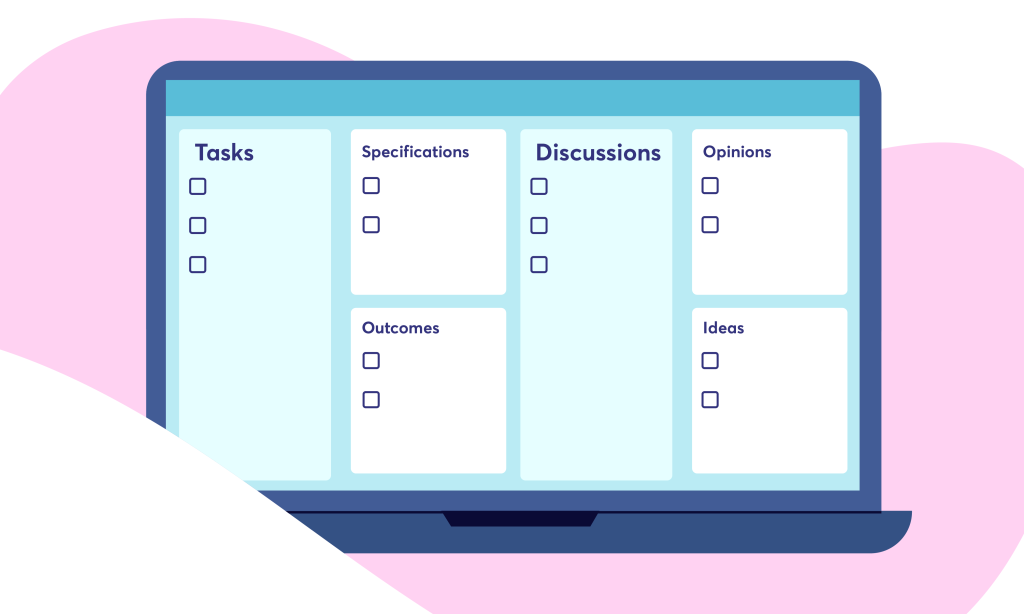In the fast-paced digital era, traditional note-taking methods are being replaced by more dynamic, adaptive systems. Digital notes, enhanced by technological advancements, are becoming the backbone of productivity for professionals, students, and innovators. It supports recursive thinking, enhancing problem-solving, creativity, and decision-making by enabling iterative reflection and refinement.
Digital notes’ flexibility, interactivity, and accessibility enable recursive processing, enhancing understanding and speeding up problem resolution. This transformation is impacting various fields, including technology, education, and personal development. In this article, we will explore how digital note-taking is reshaping recursive thinking and why it’s a game-changer in modern productivity.

What is Recursive Thinking?
Recursive thinking involves breaking down complex problems or ideas into smaller, manageable components and continually refining them. This process allows individuals to revisit and revise ideas or solutions as new information becomes available, mimicking a loop that enhances cognitive abilities. Recursive thinking is often used in fields like mathematics, computer science, and software development, where problems evolve over time and require constant re-evaluation.
Unlike linear thinking, where ideas are processed step by step, recursive thinking thrives on feedback loops that enable refinement, adaptation, and more innovative solutions. In simple terms, recursive thinking means revisiting concepts or solutions, adapting them as new information or challenges arise.
The Role of Digital Notes in Fostering Recursive Thinking
The integration of digital tools into our note-taking habits has vastly improved our ability to think recursively. Unlike traditional paper notes, digital notes come with several key features that support iterative thinking:
1. Easy Organization and Categorization
Digital note-taking tools like Notion, Evernote, and Microsoft OneNote allow users to categorize their notes into topics, tags, or themes, making it easier to revisit and modify previous thoughts. This organization reduces cognitive load by providing an intuitive structure that supports recursive thinking. The ability to quickly jump between related notes encourages users to build on past ideas or decisions, fostering deeper thinking.
2. Interactivity and Real-Time Editing
Unlike static paper notes, digital tools offer real-time editing and collaboration, enabling users to modify their notes and thoughts on the fly. This flexibility encourages recursive thinking by allowing users to make immediate revisions as new insights or solutions emerge. For instance, when developing a project or solving a problem, digital notes enable users to modify key concepts without losing the context of previous notes, making the thinking process fluid and continuous.
3. Integration with Other Tools
Many digital note platforms integrate seamlessly with other applications such as calendars, task managers, and mind-mapping tools. This interconnectedness allows individuals to work in a recursive manner, where their notes evolve alongside project tasks, schedules, and goals. For example, connecting a task list to research notes can trigger reminders and help users refine their tasks based on ongoing developments. These integrations promote cyclical thinking that adapts to changes, keeping the cognitive process dynamic and relevant.
4. Multimedia Support
One of the key benefits of digital notes is the ability to incorporate different types of media such as images, videos, and links. This multi-modal approach to note-taking recursive thinking by enabling users to visualize problems, solutions, or workflows from multiple perspectives. When working on complex issues, the ability to combine different formats enhances understanding and encourages users to reconsider and iterate on their notes.
How Recursive Thinking Improves Cognitive Efficiency
Recursive thinking is inherently linked to cognitive efficiency. It allows individuals to tackle large problems in manageable chunks and make improvements incrementally. Here are some of the cognitive benefits that arise from this approach:
1. Improved Problem Solving
Recursive thinking improves problem-solving by allowing individuals to break problems into smaller components and solve them in stages. This process not only leads to more effective solutions but also ensures that potential errors or gaps in understanding are caught early. Digital notes enhance this process by providing an organized space to track progress and make iterative adjustments.
2. Enhanced Memory Retention
By revisiting and refining information over time, recursive thinking promotes deeper understanding and better retention. Digital notes, with their ability to store vast amounts of information, make it easier to return to previous thoughts and build on them, reinforcing memory. In fields like education, where mastering complex subjects is essential, digital note-taking systems help students better retain key concepts by organizing and revisiting information recursively.
3. Encouragement of Creative Thinking
Recursive thinking can stimulate creativity by encouraging individuals to repeatedly revisit and refine ideas. Instead of settling on the first solution, recursive thinkers refine their thoughts, leading to more innovative solutions. Digital note platforms that support multi-format notes, real-time collaboration, and integration with other tools fuel this process, making it easier to explore creative avenues and iterate on new ideas.
The Future of Digital Notes and Recursive Thinking
The potential for digital notes to enhance recursive thinking continues to evolve. As technologies like artificial intelligence (AI) and machine learning (ML) become integrated into digital note platforms, the possibilities are boundless. AI-powered tools could analyze a user’s notes and suggest improvements, identify trends, or offer additional insights, thus accelerating the process of recursive thinking. This further supports the user by providing smarter ways to organize, edit, and refine ideas, making digital note platforms an even more powerful tool for innovation and productivity.
In the education sector, digital notes will continue to transform learning. As students and educators embrace recursive thinking through digital tools, the ability to synthesize information will be enhanced. This shift will support deeper learning, encourage critical thinking, and enable students to revisit and refine their understanding of complex topics.
Conclusion
Digital notes have revolutionized the way we think and work, providing a platform that fosters recursive thinking and enhances cognitive efficiency. Whether you’re a student navigating complex coursework or a professional working on innovative projects, digital note-taking tools are indispensable in promoting deeper thinking, problem-solving, and creativity. By leveraging these tools, we can not only organize our ideas but also refine them iteratively, leading to more effective outcomes.
As the technology behind digital notes evolves, recursive thinking will become an even more integral part of our cognitive process, pushing us toward smarter, more efficient ways of working and learning. By embracing these innovations, we can enhance our productivity, creativity, and problem-solving capabilities in ways never before imagined.
References
- Squire, L. R., & Kandel, E. R. (2009). Memory: From Mind to Molecules. 2nd ed. New York: Scientific American Books. Available at: https://www.simonandschuster.com (Accessed: 29 July 2025).
- Anderson, J. R. (2015). Cognitive Psychology and Its Implications. 8th ed. Worth Publishers. Available at: https://www.macmillanlearning.com (Accessed: 29 July 2025).
- Leis, A. (2022). “The Rise of Digital Note-Taking Tools and Their Impact on Learning.” Journal of Educational Technology, 34(2), 145-158. Available at: https://journals.sagepub.com (Accessed: 29 July 2025).









